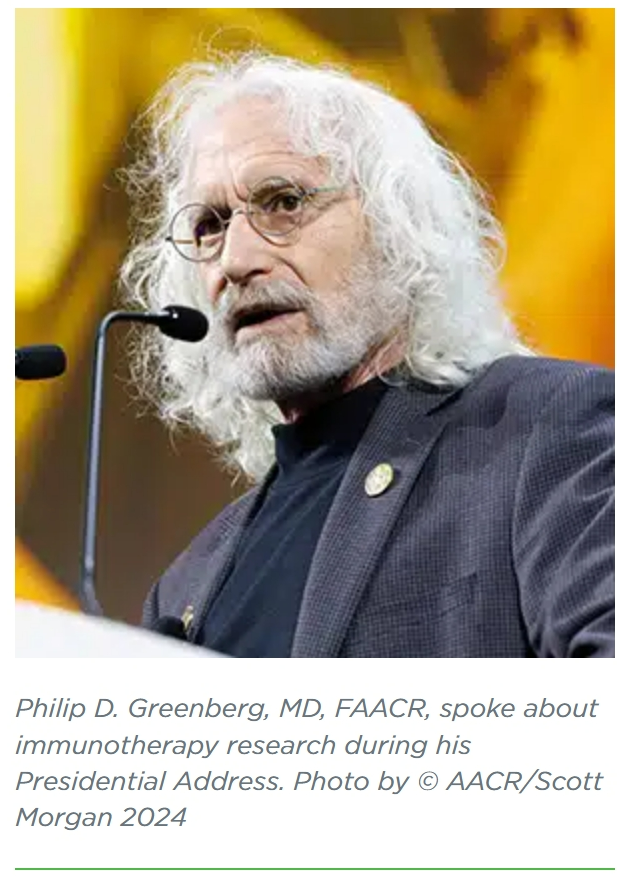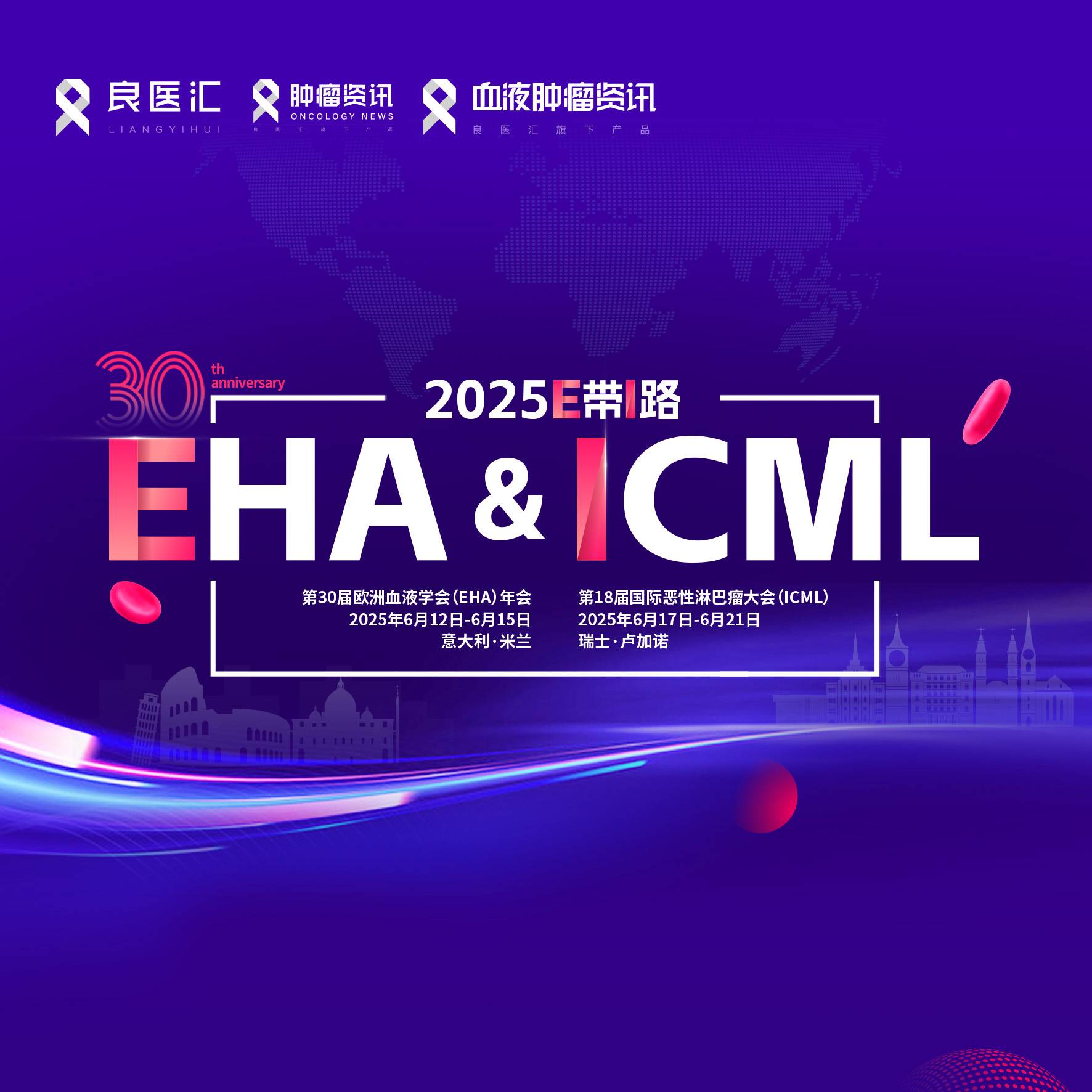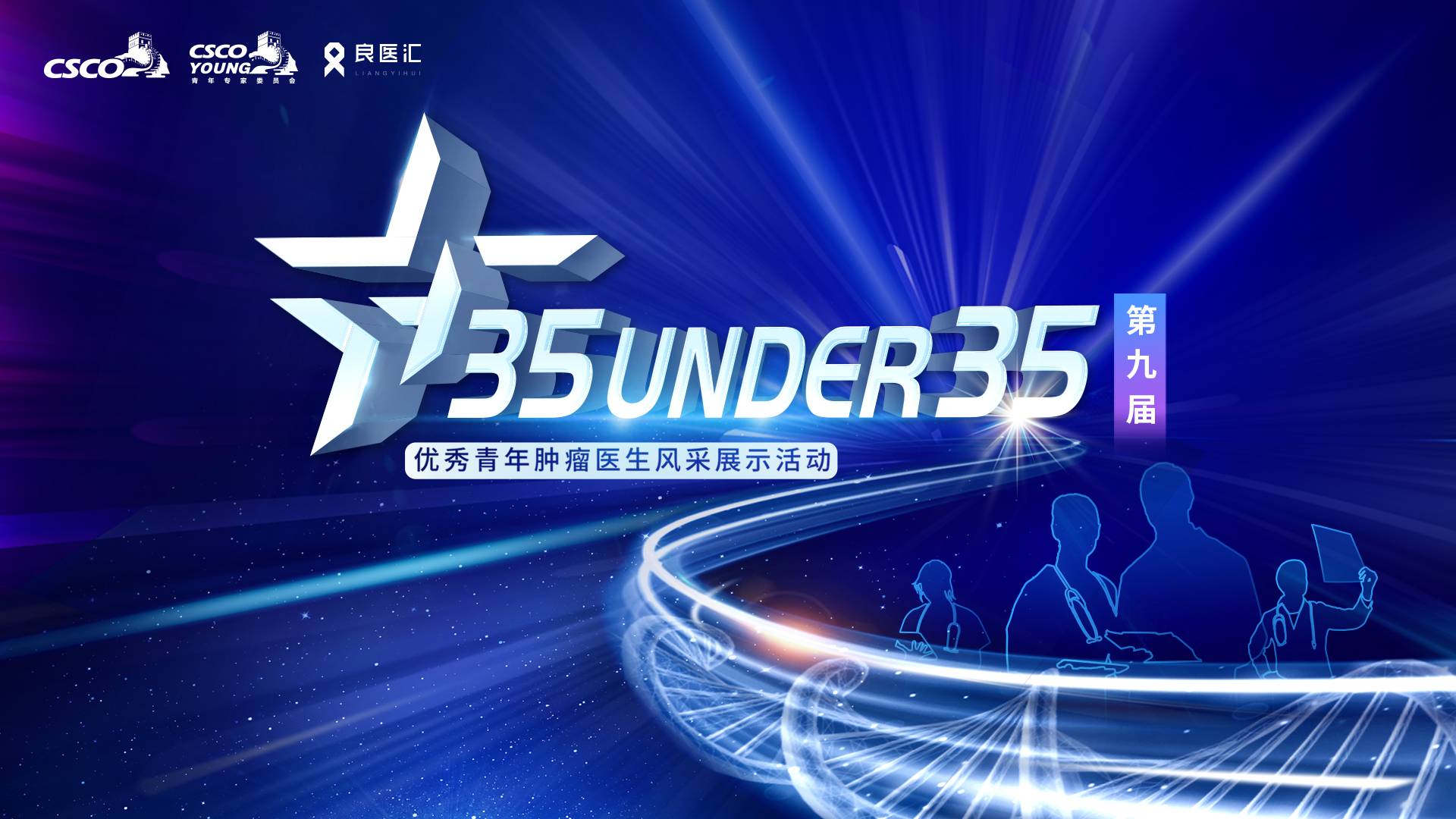
以下内容原文发布于AACR官方博客《Cancer Research Catalyst》, 中文内容仅做参考,请点击文末“阅读原文”,阅览原文内容。
在2024年美国癌症研究协会(AACR)年会上,2023-2024年AACR主席Philip D. Greenberg博士( MD、AACR会士 )发表了主席致辞,向台下听众介绍了免疫疗法研究面临的挑战、取得的成就与未来前景。
Greenberg博士表示:“在取得今天的成就之前,我们走过了一段相当曲折而漫长的道路。”他回顾了在免疫疗法的研究道路上,基础研究如何为临床研究提供信息,而临床研究又如何带动了更多的基础研究,从而帮助研究者更好地理解和改进免疫疗法。正是借助“实验室—临床—实验室”这一模式开辟的新方向,才最终促进了革命性治疗策略的发展。
Greenberg博士还分享了他个人研究历程中的一些花絮,以此体现基础研究和临床研究如何相互借鉴,从而推动免疫疗法的发展。
了解更多内容,请阅读以下原文。
The Long, Winding Road of Immunotherapy Research
During his Presidential Address at the
American Association for Cancer Research (AACR) Annual Meeting 2024
, 2023-2024 AACR President
Philip D. Greenberg, MD, FAA
CR
, regaled the audience on the challenges, successes, and future of immunotherapy research.
“It has been a very long and winding road to get to where we are,” Greenberg said, describing how, along the way, basic research has informed clinical studies, which, in turn, have led to additional basic research to better understand and improve immunotherapy. This bench-to-bedside-and-back approach has opened new directions and led to the development of innovative treatment strategies.
Greenberg shared vignettes from his own research journey that exemplify how basic and clinical research can inform each other to drive immunotherapy forward.
THE JOURNEY FROM BENCH TO BEDSIDE…
As a paradigm of the power of basic research, Greenberg, who is a professor and the head of immunology translational science and therapeutics and the Rona Jaffe Foundation Endowed Chair at the Fred Hutchinson Cancer Center, shared how basic research in mice uncovered a therapeutic strategy now being tested in patients. In the study, he and colleagues modeled a clinical trial in mice to evaluate the efficacy of engineered T cells as a treatment for pancreatic cancer.
The T cells were engineered to recognize mesothelin, a protein highly expressed by pancreatic cancer cells. Upon recognition of mesothelin-expressing cells, the engineered T cells killed tumor cells, but the effect was only transient. Further investigation demonstrated that the short-lived response was due to the eventual upregulation of immune checkpoints in the engineered T cells that persisted at the tumor site.
Greenberg and colleagues then tested whether periodically infusing new batches of engineered T cells could avoid this issue and found that this strategy was effective at prolonging responses in mice.
The approach discovered in mice was then evaluated in a phase I/II clinical trial in which patients with metastatic pancreatic cancer received an infusion of mesothelin-targeted T cells every three weeks. Tumor samples were collected from patients before, during, and after treatment to allow further laboratory research to better understand the treatment.
…AND BACK TO BENCH
Analyses of these patient samples revealed that T-cell dysfunction within the tumor remained a problem, even with repeated infusions. Despite the high expression of multiple immune checkpoint proteins in the infused cells, experiments in mice demonstrated that immune checkpoint inhibitors were not sufficient to overcome or prevent T-cell dysfunction.
The researchers then compared the dysfunctional T cells from patient samples with those from mice in prior studies and found that in both organisms, the most dysfunctional T-cell subsets exhibited high expression of the immune-suppressing protein TGFβ—a finding that Greenberg predicts will uncover ways to improve treatment responses.

“It tells us that targeting TGFβ is going to be a very important element of therapy,” he said.
Greenberg also discussed how the bench-to-bedside-and-back approach led to innovative immunotherapy strategies for advanced leukemias. In a prior clinical trial , CD8 T cells engineered to target WT1-expressing leukemia cells were ineffective in patients whose disease was progressing or had relapsed. Examining patient samples collected during the clinical trial revealed that the patient’s leukemia cells no longer expressed the WT1 epitope that the T cells were engineered to recognize—this was due to changes in gene expression and in how the WT1 protein was processed.
This discovery enabled researchers to re-engineer the T cells so that they would continue to recognize the leukemia cells, and to combine the T-cell therapy with targeted inhibitors to maintain high expression of WT1.
Analyzing patient samples from this trial also revealed that the infused T cells were dysfunctional and prone to cell death. Greenberg and colleagues overcame this challenge by engineering the T cells to express molecules that fused the cell death-inducing Fas receptor with the T-cell activating protein 41BB. In doing so, they were able to hijack cell death signaling pathways to activate the T cells instead, thereby keeping the infused T cells alive and active.
Additionally, they developed composite CD4-CD8 cells that had both the cell-killing functions of CD8 T cells and the helper functions of CD4 T cells to help maintain T-cell activity. In preclinical studies, CD4-CD8 composite cells engineered to recognize WT1 had enhanced antitumor activity than the WT1-targeted CD8 T cells used previously.
Composite CD4-CD8 T cells and T cells with Fas-41BB fusion proteins are now being evaluated in clinical trials to treat KRAS-mutated cancers, Greenberg noted.
WHERE DO WE GO FROM HERE?
Continuing the road trip analogy, Greenberg convened four luminaries in the field to shed light on new directions in immunotherapy research during the Annual Meeting’s Presidential Select Symposium, titled “Cancer Immunology—Where Do We Go from Here?”
The first speaker, AACR Fellow and Nobel Laureate James P. Allison, PhD , of the University of Texas MD Anderson Cancer Center, discussed combination strategies involving immune checkpoint inhibitors, such as combining a CTLA4 inhibitor with an agonist of the immune-stimulating protein ICOS. He also discussed using immune checkpoint inhibition in early stages of treatment and shared clinical results demonstrating the efficacy of this therapy as neoadjuvant treatment.
Nir Hacohen, PhD , of the Broad Institute of MIT and Harvard and Massachusetts General Hospital, shared considerations for developing cancer vaccines and recent progress on this front. He described cancer neoantigens as the “sweet spot” against which therapeutic vaccines should be targeted and discussed promising efficacy data from investigational vaccines for melanoma and pancreatic cancer.
The next two speakers, Alexander Marson, MD, PhD , of the University of California, San Francisco, and Andrea Schietinger, PhD , of Memorial Sloan Kettering Cancer Center, discussed strategies to improve T cell-based therapies. Marson suggested that CRISPR technology could be used to enhance T-cell function, by introducing point mutations that make immune checkpoints ineffective, for example. Beyond improving therapy, CRISPR-based modifications could also be used to study T-cell biology and uncover new regulatory mechanisms, he noted.
A strategy posed by Schietinger exploits the helper functions of CD4 T cells to enhance the antitumor activity of CD8 T cells. By studying autoimmune diseases—where CD8 T cells remain functional for extended periods of time—Schietinger and colleagues discovered that CD4 T cells are necessary for the CD8 T cell-mediated destruction of tissue. Moreover, they found that this effect required that CD4 and CD8 T cells engaged with the same antigen-presenting cell. Based on these findings, Schietinger is now developing methods to promote this three-way interaction in tumors to enhance the cancer-killing potential of CD8 T cells.
“We’ve seen cancer immunotherapies have enormous impacts on patient outcomes,” said Greenberg, “but we’ve also seen the disappointments.”
He noted that the strategies discussed in this session are “moving the needle forward” and paving the way for the next generation of cancer immunotherapy.
“We have a way to go,” he said. “There will be more bends in the road, but to quote Jerry Garcia, ‘What a long, strange trip it’s been.’”
更多内容,请点击“阅读原文”
排版编辑:肿瘤资讯-Astrid











 苏公网安备32059002004080号
苏公网安备32059002004080号


